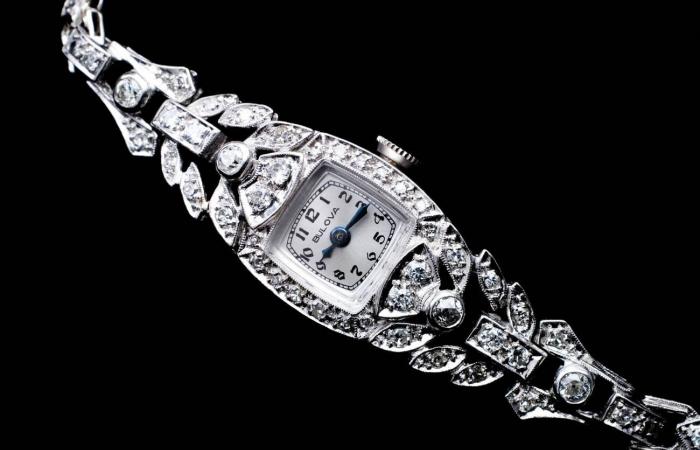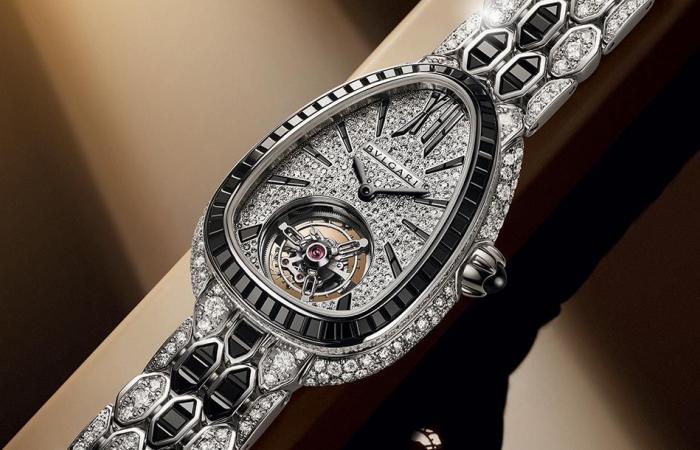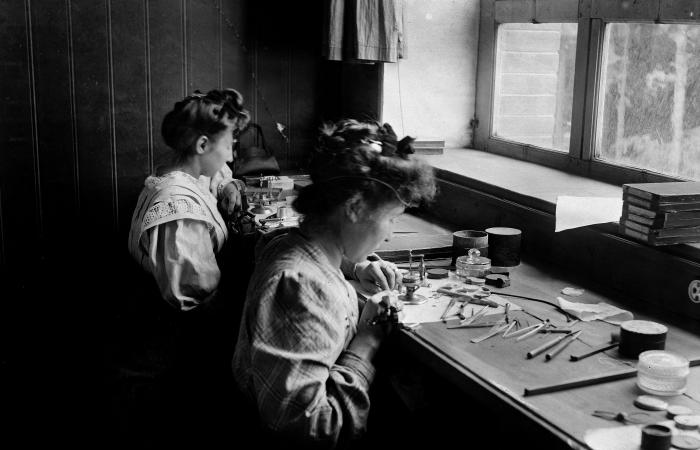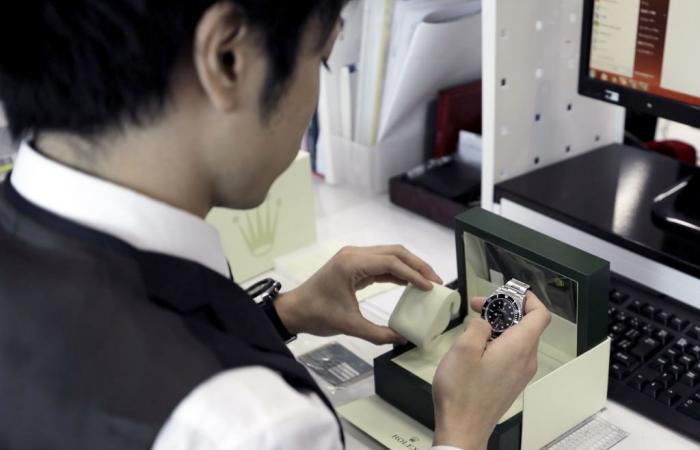A scene from the film ‘Masculin Féminin’ by Jean-Luc Godard (1966). The watch industry is still primarily geared towards men, but the lines are shifting.
1966/Columbia Pictures
Fashion is increasingly moving away from gender stereotypes, blurring the lines between masculine and feminine. Watchmakers are also faced with the choice of whether or not to maintain the traditional division between male and female models. The investigation by our journalist Alexey Tarkhanov.
This content was published on
June 24, 2024 – 09:45
“A Sylvester Stallone watch would not suit Audrey Hepburn,” says designer Bruno Bellamich, co-founder of the Bell & Ross brand. Not for a question of the masculine or feminine ideal of fashion, but quite simply because of the difference in wrist size between the two American actors.
Bruno Bellamich, however, does not take into account the energy of resistance that has accompanied all fashion revolutions. Let’s remember Coco Chanel, who borrowed pieces from the men’s wardrobe and didn’t like small feminine watches. Of course, in Coco Chanel’s time, men’s watches were the size of contemporary ladies’ watches.
The Luminor Submersible 1950 watch owned and worn by Sylvester Stallone in The Expendables 2, circa 2011, is on display at Sotheby’s auction house in New York, June 4, 2024.
Keystone/epa
As for Sylvester Stallone, he should now choose a smaller model.
Oversized timepieces, which were fashionable in the 2000s, have disappeared. Fashion is no longer for exaggerated, even caricatured, masculinity.
Can a watch be sexy?
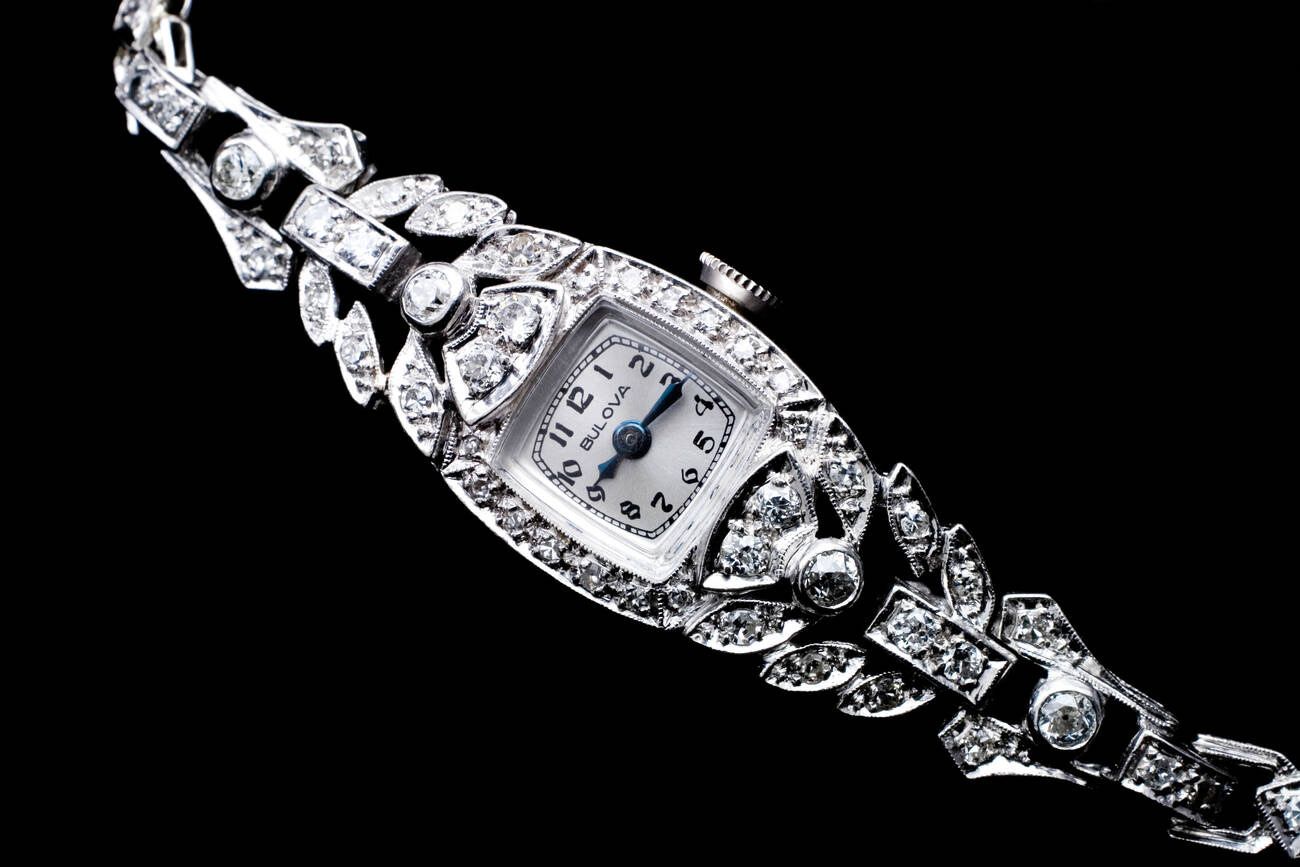
The Royal Oak chronograph from the Swiss brand Audemars Piguet owned by former Formula 1 driver Michael Schumacher is displayed during a media presentation at Christie’s, in New York, May 3, 2024,
AFP
Thus, Julien Tornare, when he was director of the famous Neuchâtel watch brand Zenith, stated that he wanted to gradually abandon ostensibly “masculine” models, believing that “such a division has disappeared in automobiles, and will also disappear in watchmaking “.
Since this year, at TAG Heuer, he has continued this practice. His colleague Ricardo Guadalupe, head of the Hublot brand, shares this point of view: “Although we have a higher proportion of male customers, we have stopped classifying watches according to gender. We have different collections with varied sizes, open to various choices.
In addition to unisex watches and a more targeted specialized offering, brands now want to convey the idea of freedom of choice in their discourse. Cyrille Vigneron, the director of Cartier, recalls that at the dawn of watchmaking, there were no specifically “lady” and “man” models, and that they became “feminine” or “masculine” only according to the person who owned them.
He believes that the era of strict separation of models is over, and that watchmakers should no longer impose their preferences: “It is not our job to choose who will wear which Cartier watch, our job is to ensure that these people have free choice, and that it be as broad as possible.

Bulova ladies’ wristwatch in platinum with diamonds.
Alamy Stock Photo
Other representatives of predominantly “feminine” brands are less enthusiastic about this idea. “I don’t really understand this movement towards ‘asexual’ watches,” says Antoine Pin, general director of Bulgari Horlogerie. Does that mean a watch can’t be sexy?”
Men’s collections represent a smaller share of products from brands such as Chanel, Harry Winston, Dior and Chopard. Working mainly for a female audience, these watch companies do not need to be particularly concerned with creating unisex models that would also suit men.
Diamonds instead of complications
For many years, women’s watches were made according to a rather cynical recipe: similar to men’s watches, but smaller, with a quartz movement instead of a mechanical movement, and set with diamonds.

Sylvia Kristel, right, and Swiss watchmaker Yves G. Piaget, left, present the most expensive men’s wristwatch on the actress’s wrist. Photo taken on February 20, 1982 in St. Moritz.
Keystone
It was assumed that women did not need any special complications, except perhaps the phases of the moon, that they did not like winding mechanical watches and preferred a battery. Additionally, small models often did not have enough space to accommodate complications; the excess of diamonds compensated for the simplicity of the technique.
The Grand Prix d’Horlogerie de Genève (GPHG) rewards the winners in the men’s and women’s watch categories, with or without complications. The introduction, since the 2013 edition, of a specific “complication prize for women” category marks a turning point.
Fairies, flowers and birds
But the question of which complications are most appropriate remains open. In 2010, Van Cleef & Arpels launched a complex mechanical watch, called “Bridge of Lovers,” adorned with an animation depicting two lovers meeting on a bridge. “We had to forget that a watch complication is intended for precision and turn to the artistic value of the piece,” explains Nicolas Bos, president director of the brand from 2010 to 2024.
The watchmakers at Van Cleef & Arpels even invented a particular definition of “poetic complications,” paving the way for creations where flowers bloom, birds flap their wings and fairies wave magic wands.
At the last GPHG ceremony, the women’s complication prize drew a reprimand from jury member and Scandinavian watch connoisseur Kristian Haagen. “A complication is a complication, and why do we need separate complication categories for women and men?” he asked.
Tiny swirls
Perhaps he is right to think that the “poetic complications” might reflect a certain distrust of women’s ability to appreciate technology without a literary veneer. The technique is used as decoration, which is questionable for a watchmaking purist.
But in reality, even traditional complications have lost their practical usefulness. In the past, the tourbillon was supposed to compensate for the effects of gravity, while the minute repeater was used to tell the time in the dark. Today, although the exact time is easily accessible on a cell phone, this does not detract from the beauty of the watchmaking challenge.

The famous Serpenti Seduttori model from Bulgari.
Bulgari
“The tourbillon no longer has any practical value, but remains a jewel of the art of watchmaking,” emphasizes Jean-Christophe Babin, director of the Bulgari brand, which has integrated tiny tourbillons into its emblematic Serpenti models. Women can legitimately wear this ‘diamond’ in our watches.”
An ever-increasing customer base
However, women today represent a growing share of watch brand customers, and they are guided by their own tastes and their understanding of what a “lady’s watch” should be.
According to the Chrono24 platform, specializing in the sale of luxury watches online, between January 2019 and December 2023, the percentage of women having purchased luxury watches with a diameter equal to or greater than 40 mm increased from 21% to 35 %. The results of the studyExternal link reveal another interesting observation: women represent 59% of the total customer base for watches whose price varies between 10,000 and 20,000 euros.
Journalist Elisabeth Schroeder notes, in an article published on Chrono24 Magazine, that “women are more open to watches with an unconventional case shape, that is to say rectangular, square, etc.” This would demonstrate their audacity as consumers, in contrast to men who generally prefer round watches.
Minority women in leadership positions
But the key to a more inclusive and less stereotypical watch industry may lie elsewhere. If, today, women buy their own watches, they are mainly designed by men. “In the world of watchmaking, only 17% of management positions are occupied by women,” indicates the Watch Industry Employers’ Convention (CPIH).
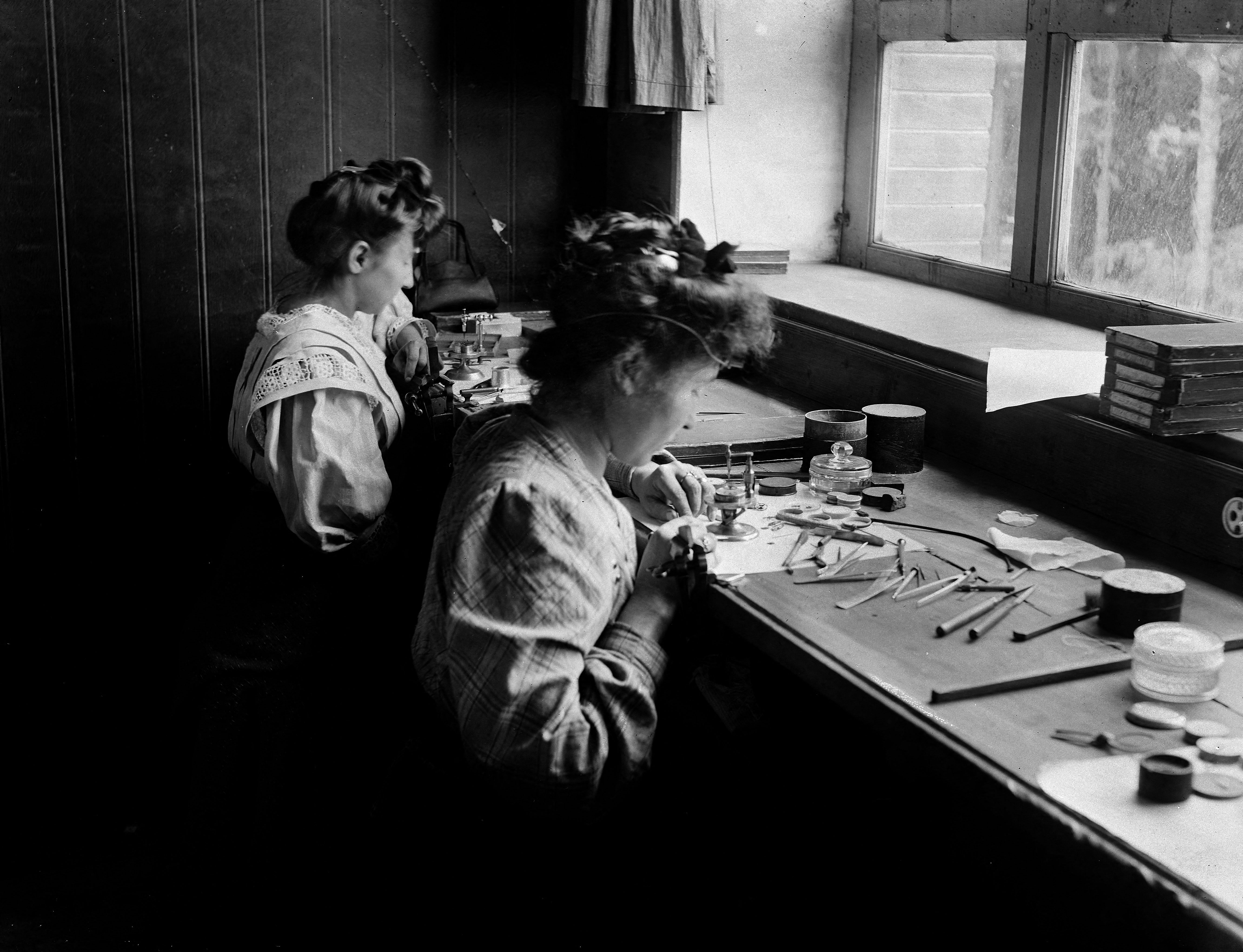
Workers in a watch workshop in Besançon, 1908.
AFP/Jacques Boyer
However, Marine Lemonnier-Brennan, founder of the 289 Consulting agency, still observes an evolution in this traditionally very masculine world. “In recent years we have seen the arrival of women in strategic positions at Jaeger-LeCoultre, Chopard, Audemars Piguet, Vacheron Constantin, Hublot, TAG Heuer and Harry Winston. They are either CEO, Product Director, Designer or Movement Manager, and contribute to evolving watchmaking towards an offer designed and designed specifically for women,” underlines Marine Lemonnier-Brennan.
And to cite the example of the Beauregard brand, based in Geneva and founded by Alexandre Beauregard in 2011, which aims to create watches combining, since the beginning, jewelry and complex mechanics: “Never an independent brand of high watchmaking had previously only been created for women,” says Marine Lemonnier-Brennan.
Text reread and verified by Samuel Jaberg
Learn more
Following
Previous

More
From Geneva to Tokyo, these untraceable Rolexes
This content was published on
Apr 07, 2022
Under the hashtag #rolexmarathon, Japanese people talk about their difficulty in buying the Rolex watch of their dreams. Narrative.
read more From Geneva to Tokyo, these untraceable Rolexes



